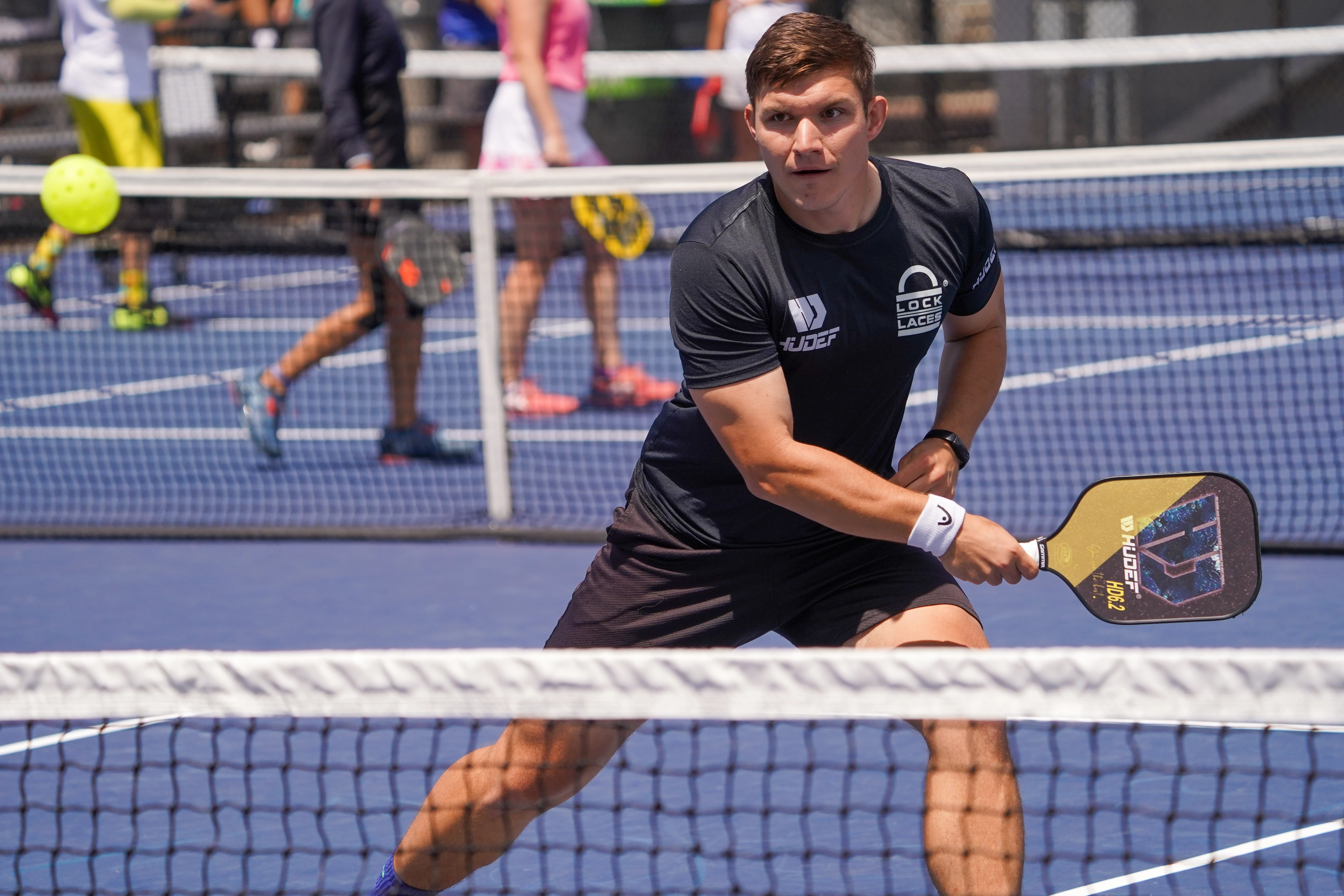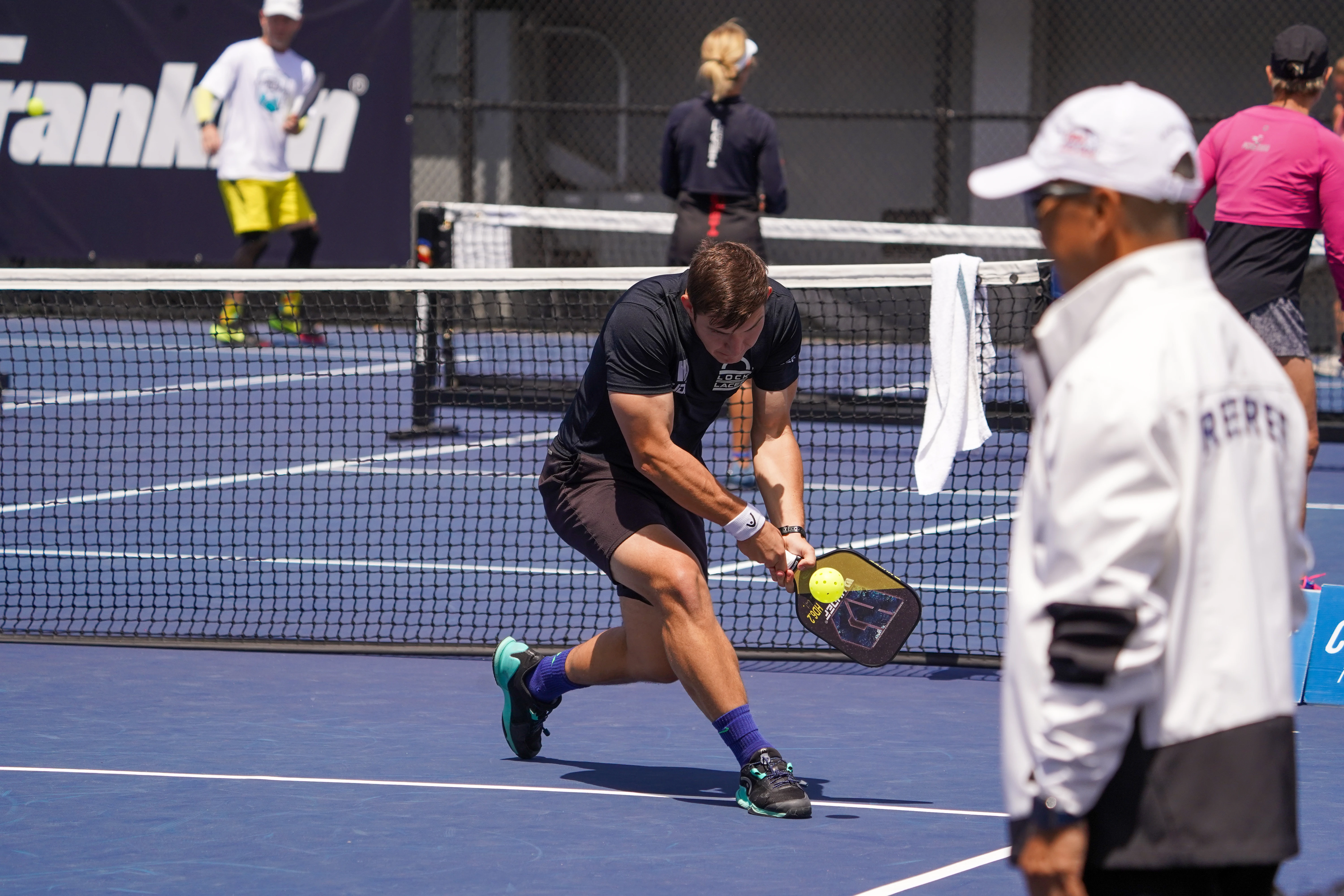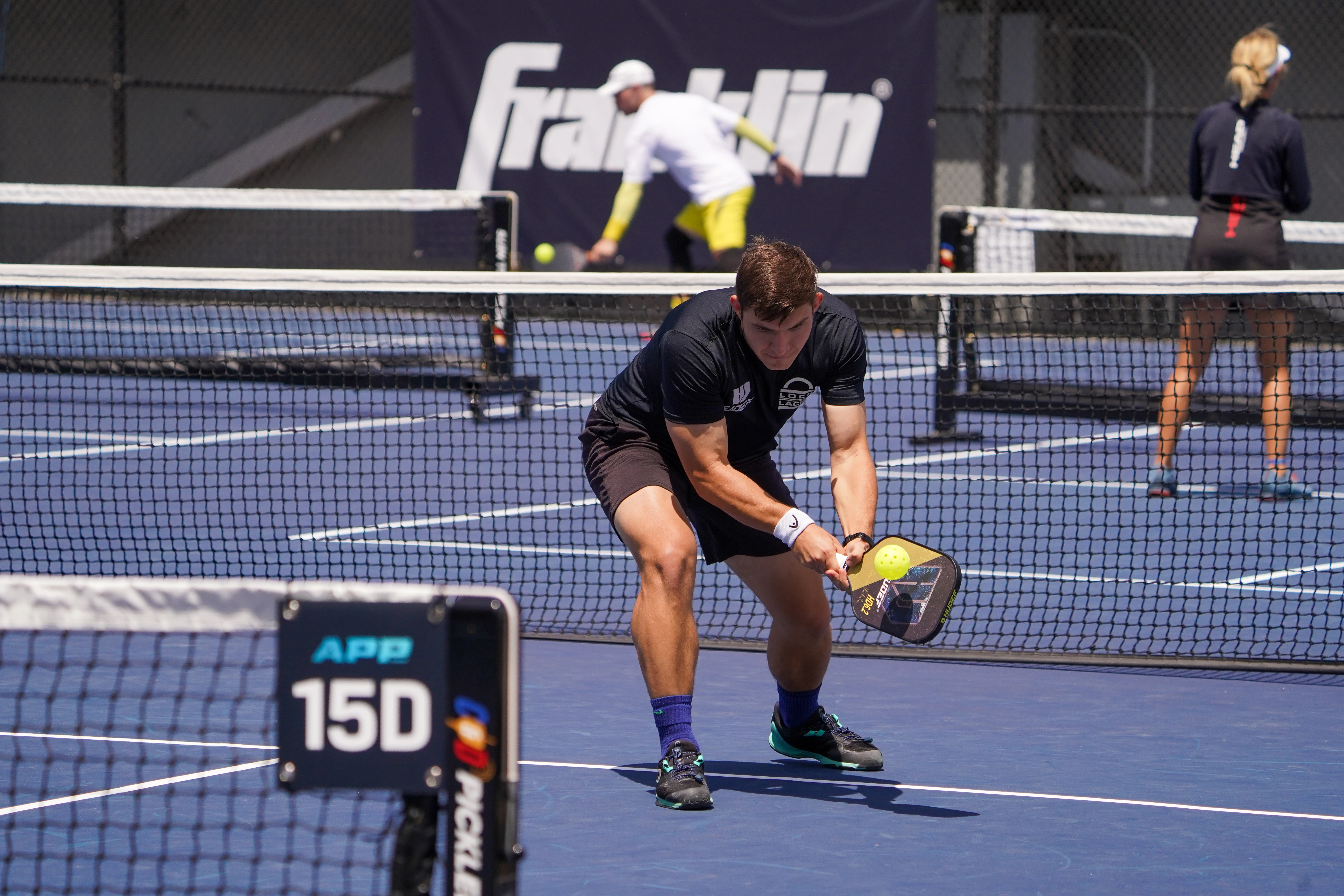
You want your pickleball paddles to withstand every intense match, but even professional extended pickleball paddles can break under pressure. Repeated ball strikes, material fatigue, and rapid wear can damage your pickleball paddle. Hudef’s advanced technologies, including honeycomb core dispersion and titanium alloy coatings, ensure your professional extended pickleball paddles break less often and last longer.
Key Takeaways
Professional extended pickleball paddles break mostly because of tired materials, hard hits, mistakes in making them, and using them too much. Picking paddles with new features like honeycomb cores and titanium coatings makes them last longer.
Look for signs your paddle is hurt, like cracks, weird noises, less bounce, and problems with the handle or edge. If you find these early, you can fix or change your paddle before it gets worse.
Take care of your paddles by cleaning and drying them after you play, keeping them in cool, dry places, using different paddles so one does not get used too much, and picking strong materials to keep your paddle working well.
Why Professional Extended Pickleball Paddles Break
Professional extended pickleball paddles break for many reasons. Sometimes, your paddle may not work as well or might crack after tough games. Knowing why this happens helps you stop it and pick the best pickleball paddles for your needs.
Material Fatigue
Material fatigue means your paddle gets weaker from lots of use. Every time you hit the ball, the inside of your paddle feels stress. Carbon fiber paddles can last over three years if you take care of them. Composite paddles last one to three years. Wood paddles break the fastest, sometimes in just six months. If you play hard or hit with a lot of power, your paddle gets more stress. This causes tiny damage inside the paddle over time. You might see dead spots where the paddle does not bounce well. Even if you take care of your paddle, material fatigue will still make your pickleball paddles break one day.
Hudefsport uses honeycomb core dispersion technology to slow down material fatigue. The 6mm thick polypropylene honeycomb spreads out the force from hits. This means no single spot gets too much stress. Your paddle lasts longer and keeps its power and control.
Impact and Accidents
Accidents can happen during pickleball games. You might hit the ground, the net post, or another paddle. These hits can cause cracks or even break your paddle. If your paddle has a small sweet spot, it can break more easily. Hitting away from the center puts more force on the edges. Edgeless paddles do not have a guard, so they have a smaller sweet spot and less protection. This makes the core easier to damage if you miss the center.
Hudefsport’s paddles have a flexible edge guard made from thermoplastic polyurethane. This guard softens hits and protects the core. It also makes the sweet spot 35% bigger. You get more help if you hit off-center, so your paddle is less likely to break during tough games.
Manufacturing Issues
Sometimes, problems during making the paddle can cause it to break. If the glue between the core and face is not strong, the layers can come apart. This is called delamination. Delamination makes dead spots and weakens the paddle. The handle can also become loose if the glue or staples do not hold. This can make the handle twist or break. If the edge guard glue fails, the core can get damaged.
Hudefsport fixes these problems with thermoformed manufacturing. They use 1200-ton pressure molding to stop delamination. The unibody handle and composite edge guards make the paddle stronger. Titanium alloy coating adds a 0.1mm layer to protect the surface. This makes the paddle last longer and stops it from wearing out fast.
Overuse
Playing pickleball every day or for a long time can break your paddle faster. Overuse makes material fatigue happen sooner and causes more tiny damage. If you play hard, hit with power, or do not care for your paddle, it will break faster. Even the best paddles will wear out if you use them too much without care.
Hudefsport’s three-layer shock absorption system helps with overuse. The carbon fiber face, shock-absorbing foam, and honeycomb core work together to take in 72% of vibration. Gel pads in the handle absorb 70% of impact vibration. This protects your joints and helps your paddle last longer.
Tip: Switch between paddles if you play a lot. This lets each paddle rest and lowers the chance of breaking from overuse.
Professional extended pickleball paddles break because of material fatigue, impacts, making mistakes, and overuse. Picking paddles with new technology, like hudefsport, helps you avoid these problems. You will get better power, spin, and control when you play.
Signs of Paddle Breakage

Cracks and Splits
You can spot early signs of breakage by checking your paddles for cracks and splits. Look for visible chipping or cracking on the surface. These marks often appear after hard impacts or long use. Sometimes, you may hear odd noises, like crackling or snapping, when you hit the ball. These sounds mean the paddle’s structure is weakening. If you notice a loss of bounce or a sudden drop in pace, your pickleball paddle may have internal splits. Try the thumb test: press on the center of the paddle and listen for crackling. This test helps you find hidden damage before it gets worse.
Visible cracks or chips on the surface
Odd or crackling sounds during play
Loss of bounce or sudden drop in pace
Sound and Feel Changes
Changes in sound and feel often signal internal damage. When you strike the ball, a healthy paddle makes a crisp, solid sound. If you hear a dull or hollow noise, the core may have dead spots or delamination. You might also feel bumps, dips, or rough spots on the paddle’s surface. These changes mean the structure inside is breaking down. Temperature swings can make this worse by causing the materials to expand or contract. Regularly tap your paddle with your knuckle and run your fingers over the surface to catch these problems early.
Tip: Early detection keeps your pickleball paddles in top shape and helps you maintain optimal performance.
Performance Drop
When your pickleball paddles near breakage, you will notice a drop in performance. Your shots may lose power, even if you swing with the same force. The paddle becomes less responsive, making it harder to control the ball. Uneven wear, like smooth or worn spots, causes unpredictable ball movement. Strange sounds, such as dull thuds or rattles, also point to internal damage. These issues make it tough to play your best game.
Handle or Edge Issues
Handle and edge problems are clear signs your paddles need attention. If the grip feels loose or worn, you lose control and comfort. A weak or shifting handle can signal deeper structural issues. Check the edge guard for cracks or separation. Damage here exposes the core and increases the risk of breakage. Keeping an eye on these areas helps you catch problems before they affect your pickleball experience.
When Paddles Break
Immediate Actions
If your pickleball paddle breaks during a game, stop using it right away. Playing with a broken paddle can make things worse. It can even hurt you. Check your paddle for cracks, loose handles, or edge problems. If you see any damage, put the paddle down. Use your backup paddle instead. Acting fast keeps you safe and helps you play better.
Tip: Always carry an extra paddle in your bag. This way, you can keep playing if one breaks.
Warranty and Replacement
Most top pickleball paddle makers give warranties if your paddle breaks from defects. Here are some common rules:
Many brands, like Engage Pickleball, have a limited lifetime warranty for defects.
You usually need to register your paddle within 30 days to get the warranty.
Warranties only work for the first buyer and do not cover normal wear or misuse.
Some companies, like Paddletek and Engage, give extra promises like a 5-year no dead spot warranty.
Take care of your paddle to keep your warranty. Do not hit anything but the ball and store your paddle safely.
If your paddle breaks and is under warranty, contact customer service for help with repair or replacement.
Safe Disposal
When your pickleball paddle is too old or broken, use safe ways to get rid of it:
Turn broken paddles into plant holders, racks, or art to cut down on waste.
Give paddles that still work to schools or community groups.
Look for local recycling programs for sports gear, since paddles have materials that do not break down.
Ask paddle makers about recycling or disposal tips.
Try eco-friendly services like Eco Sports, which reuse old paddles and keep them out of landfills.
Doing these things helps the environment and supports other pickleball players.
Preventing Breakage

Paddle Care
You can make your paddles last longer with good care. Change the grip when it gets slippery. This helps you hold the paddle better and stops slips. Try not to bump paddles together. That can cause scratches or dents. After each game, wipe your paddle with a soft towel and warm water. Dry it right away so it does not get wet. Never put your paddle in water. Play gently and avoid rough swings. This keeps your paddle from breaking faster. If you play a lot, use different paddles. This lets each paddle rest and lowers the chance of breaking.
Change old grips for better hold.
Don’t hit paddles together.
Clean and dry after every game.
Switch paddles to slow down breaking.
Play gently to keep power and spin.
Storage Tips
Storing your paddles the right way keeps them strong. Put paddles in a cool, dry place. Keep them out of the sun and away from heat. Heat can bend or crack your paddle. Use covers or bags to protect from bumps. Don’t throw paddles in bags with other things. Make sure paddles are dry before you put them away. Wet paddles can get damaged. Keep sweaty or wet stuff away from your paddles. Clean and store your paddles with care to stop them from breaking.
Dry before putting away.
Choosing Durable Pickleball Paddles
Pick paddles with strong features for more power and longer use. Paddles made with aerospace-grade carbon fiber or titanium last longer. These paddles do not break as easily. Multi-layer coatings and strong bonding help paddles stay tough in hard games. Unibody paddles have no weak spots and can take more power. Shock absorption systems cut down on vibration. This protects your paddle and your joints. Look for UV protection and balanced weight. These features help you get more power and spin and keep your paddle working well.
Feature |
Benefit |
|---|---|
Lasts longer and stops wear |
|
Shock absorption |
Lowers vibration and protects the core |
Unibody design |
No weak spots for better strength |
UV protection |
Stops sun damage and fading |
Tip: Only use your paddles for pickleball. Stay away from rough ground and bad weather. This keeps your paddle strong and powerful.
Pickleball Paddle Durability
Material Choices
You have many options when choosing paddles for pickleball. Most professional paddles use a polymer or polypropylene honeycomb core. This core gives you a good mix of touch, power, and durability. Some paddles use Nomex or aluminum cores. Nomex offers high strength and power, but it can be harder to control. Aluminum is light and strong, but it is less common because it can corrode. For the paddle face, you often see graphite, carbon fiber, or fiberglass. Graphite gives you control but can be brittle. Carbon fiber lasts longer and has a woven structure for extra strength. Fiberglass gives you more power and holds up well. Rubber edge guards protect your paddle better than plastic ones. New foam cores, introduced in 2025, help paddles keep their shape and feel longer.
Lifespan Expectations
You want your paddles to last as long as possible. High-quality paddles made from graphite, carbon fiber, or composite materials can last several years with regular use. Wood paddles wear out much faster, sometimes in just a few months. How often you play and how hard you hit the ball will affect how long your paddle lasts. If you care for your paddles by storing them in bags, keeping them away from heat and cold, and cleaning them after play, you can extend their life. Regular checks for cracks or changes in sound help you spot problems early.
High-quality paddles: last 1–5 years
Wood paddles: last a few months
Frequent, aggressive play shortens lifespan
Good care and storage extend paddle life
Professional vs. Amateur Use
You will notice a difference in how long paddles last depending on your level of play. Professional players use their paddles more often and hit harder. This means their paddles may wear out faster, even if they use the best materials. Amateurs who play less often and with less force can expect their paddles to last longer. If you play in tough conditions or compete often, check your paddle more often for signs of wear. Proper care and choosing the right materials help both pros and amateurs get the most from their paddles.
Tip: No matter your skill level, treat your paddles with care to keep them strong and ready for every pickleball match.
You can find early signs of breakage by looking for cracks. Listen for new sounds or notice if your paddle works worse. Using strong materials and taking care of your paddle helps it last longer. Hudefsport paddles are made to be tough. Check, clean, and switch your paddles often. This keeps them strong and helps you play your best.
FAQ
How often should you replace your pickleball paddle?
You should replace your paddle every 1–3 years. Check for cracks, dead spots, or loss of power. Frequent players may need new paddles sooner.
What is the best way to clean your pickleball paddle?
Use a soft, damp cloth to wipe the surface. Dry it with a towel. Avoid harsh cleaners or soaking the paddle in water.
Can you use your pickleball paddle in the rain?
You should avoid using your paddle in the rain. Water can damage the core and surface. Store your paddle in a dry place after play.















